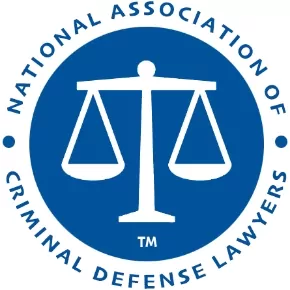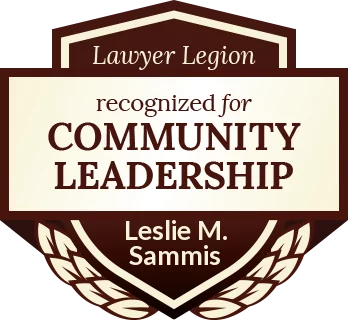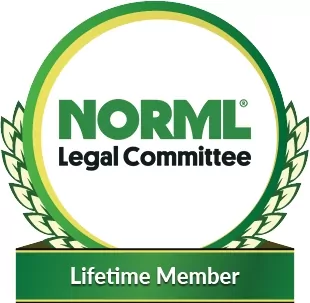Types of Claimants
In a civil asset forfeiture case, a claimant is any individual or entity that has standing to file a claim asserting an interest in a civil asset forfeiture proceedings. The claimant files the claim to enter the litigation. Filing the claim is the only way to contest the government’s attempt to forfeit the asset. The most common types of claimants include the folloiwng:
- Owner
- An owner is a person or entity that holds a direct ownership interest in the seized property. The owner in a civil asset forfeiture case might include either an sole owner or a co-owner.
- The owner must prove their ownership interest in the asset, which is a foundational requirement for having standing to contest the forfeiture.
- If the government can prove the property was used in or derived from a crime, the owner’s interest may still be forfeited, unless they can prove they qualify as an “innocent owner.”
- Innocent Owner
- An innocent owner is a special category of owner who can claim a defense to the forfeiture. To qualify, a person must prove by a preponderance of the evidence that they were either:
- Unaware of the illegal activity involving the property, or
- Upon learning of the illegal activity, they did everything reasonable to stop it.
- The innocent owner defense is crucial for people who have had their property misused without their knowledge, such as a car owner whose vehicle was used by a friend to transport drugs without their consent.
- An innocent owner is a special category of owner who can claim a defense to the forfeiture. To qualify, a person must prove by a preponderance of the evidence that they were either:
- Spouse
- A spouse may be a claimant in a civil asset forfeiture proceeding f they have an ownership interest in the seized property, either through joint ownership, community property laws, or other legal arrangements.
- The spouse can then assert their own rights to the property, often using the “innocent owner” defense if they were not involved in or aware of the illegal activity. In some jurisdictions, the innocent owner defense is automatically applied to a spouse’s interest.
- Bailor and Bailee
- The terms bailor and bailee describe a relationship involving the temporary transfer of property possession without a change in ownership.
- A bailor is the original owner who gives the property to another.
- A bailee is the person who receives and holds the property for a specific purpose (e.g., a mechanic who holds a car for repair or a storage company holding personal belongings).
- A bailee can be a claimant in a forfeiture action because they have a legal right to possess the property.
- Under Fed. R. Civ. P. Suppl. R. G(5)(a)(iii), “[a] claim filed by a person asserting an interest as a bailee must identify the bailor, and if filed on the bailor’s behalf must state the authority to do so.”
- The bailee and the bailor may file separate claims in the same case. For example, if a car is seized from a mechanic (the bailee) because its owner (the bailor) was using it for criminal activity, the bailee may file a claim to get the car back to continue the repairs, while the bailor would file a claim to prevent the government from taking their property permanently.
- Lienholder
- A lienholder is a creditor who has a secured interest in the property, such as a legal right to the property to satisfy a debt.
- Examples of lien holders filing claims in civil asset forfeiture proceedings include a bank or financial institution that holds a mortgage on a house or a loan on a vehicle.
- A lienholder can also be an “innocent owner” if they can prove their interest was created in exchange for money, goods, or services and they had no knowledge of the criminal activity at the time the lien was created.
- If a lienholder is successful in their claim, their interest in the property will be protected, and the government must satisfy their debt from the proceeds of the property’s sale or return the property to them.
- Secured Creditor
- A secured creditor is any person or entity that has a security interest in the property. While this term is often used interchangeably with “lienholder,” it can encompass a broader range of interests, such as those arising from commercial loans secured by inventory, equipment, or other business assets.
- Like lienholders, secured creditors can file a claim to protect their financial interest in the property.
- In a civil asset forfeiture case, the secured creditor must demonstrate that their interest was created legally and without knowledge of any criminal activity related to the asset.
- Mortgagee
- A mortgagee is a specific type of secured creditor, namely the lender who holds the mortgage on real property, such as a house or commercial building.
- A mortgagee has a direct financial interest in the property and can file a claim to ensure their loan is repaid from the proceeds of the forfeiture sale.
- In a civil asset forfeiture proceeding, the mortgagee’s claim is typically prioritized over the government’s claim to the property.
- Victim
- A victim is a person who has incurred a pecuniary loss as a direct result of the offense underlying the forfeiture, unless they can demonstrate a legitimate ownership interest.
- Victims may petition for remission or mitigation of forfeiture, but their claims are generally addressed through administrative processes rather than direct intervention in the judicial forfeiture action.
- The Attorney General has discretion to restore proceeds to victims after forfeiture is completed.
- Judgment Creditor
- A judgment creditor is a person or entity that has obtained a court judgment against the property owner.
- The judgment can create a lien on the property, giving the judgment creditor an interest in the asset.
- If the property is seized for forfeiture, the judgment creditor can file a claim to ensure their judgment is satisfied from the property’s value.
- The ability of the judgment creditor to successfully claim the property depends on the specific state laws and the timing of their judgment in relation to the illegal activity.
- Trustee
- A trustee is a person or entity that holds and manages property for the benefit of another (the beneficiary) under a legal trust.
- When a property held in a trust is seized, the trustee is the appropriate party to file a claim.
- The trustee must demonstrate their legal authority over the property and can often use the “innocent owner” defense if the beneficiary or a third party was involved in the illegal activity without the trustee’s knowledge.
- Heir or Legatee
- An heir is a person who inherits property under intestacy laws.
- A legatee is a person who inherits property under a will.
- An heir or legatee may become a claimant if the property is seized after the death of the original owner.
- If the deceased owner’s property is subject to civil asset forfeiture, the heir or legatee has a legal right to challenge the forfeiture to protect their inheritance.
- The success of the heir’s or legatee’s claim often depends on whether the forfeiture action relates to criminal activity that occurred during the deceased’s lifetime and whether they can assert the “innocent owner” defense.
- General Creditor
- A general creditor is one whose claim is not secured by a specific right to the property.
- General creditors are not considered owners and generally lack standing to contest forfeiture.
- The general creditor’s remedy, if any, is through the remission or mitigation process administered by the Attorney General, not through direct intervention in the forfeiture proceeding.
- Subrogee
- A subrogee is a party who has paid a claim and thereby acquires the rights of the original claimant.
- Subrogees may assert claims in forfeiture proceedings if their subrogation is recognized by statute or contract and if they have a colorable interest in the property.
- Subrogated claims must be distinguished from mere liens, which do not confer standing unless the lienholder meets the statutory requirements.
- Nominee
- A nominee is a person who holds title to property but exercises no dominion or control over it.
- Nominees are excluded from the definition of “owner” and generally lack standing to contest forfeiture unless they can demonstrate a legitimate ownership interest.
Other categories of recognized claimants include lessors, voluntary bailors, and parties with divided interests (such as tenants in common or joint tenants). Their rights to contest forfeiture or seek remission are determined by the nature of their interest, the timing of its acquisition, and their knowledge of the illegal conduct. State law often plays a role in defining these interests, especially in the context of family property arrangements and community property regimes.
The attorneys at Sammis Law Firm represent a wide range of claimants in both civil and criminal asset forfeiture proceedings.
Contact us to discuss your case. Call 813-250-0500.
This article was last updated on Thursday, September 11, 2025.







